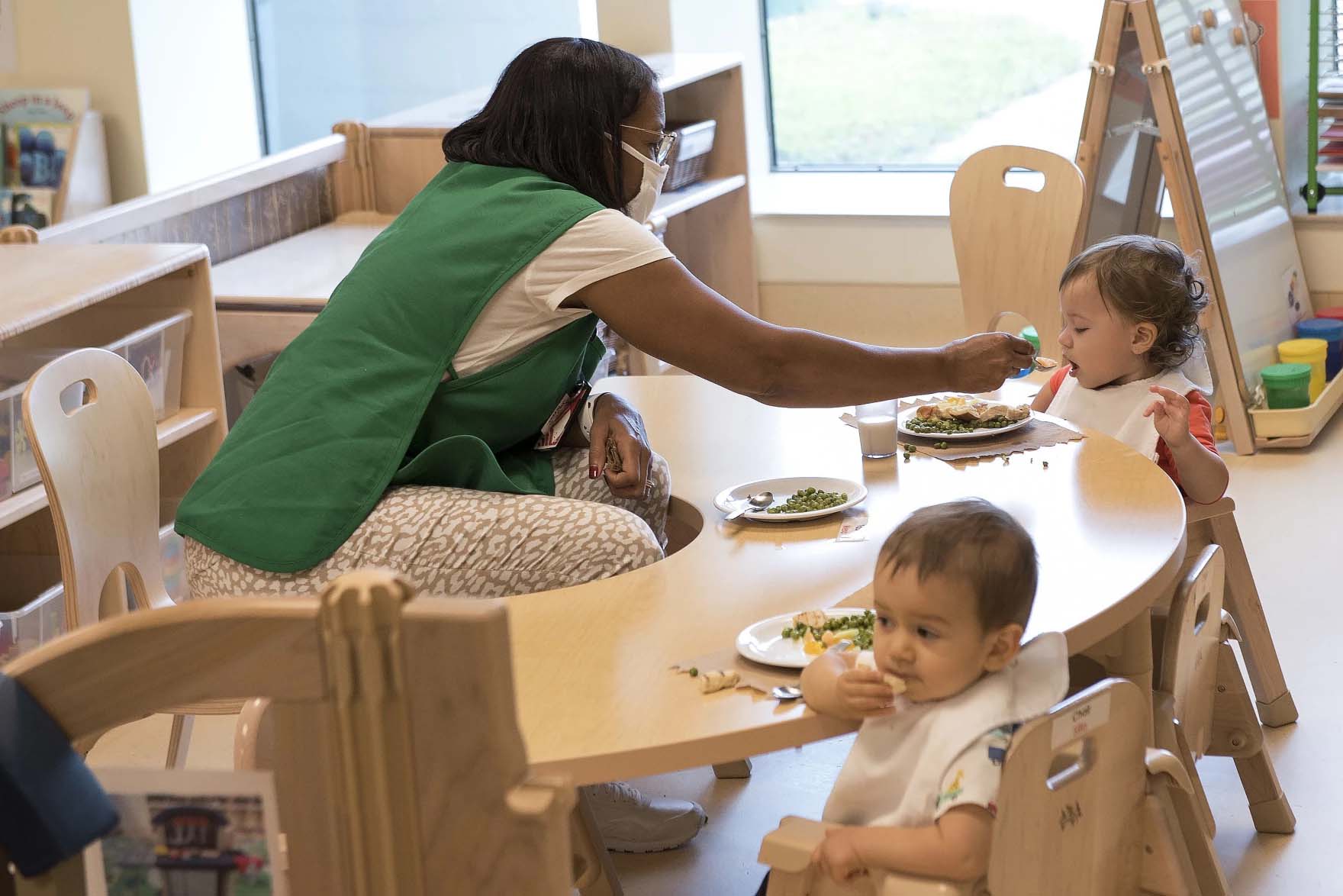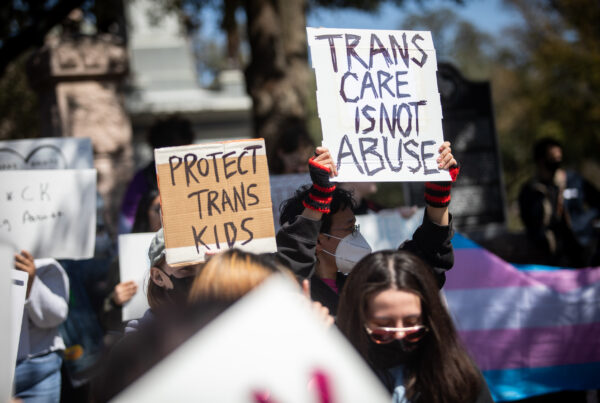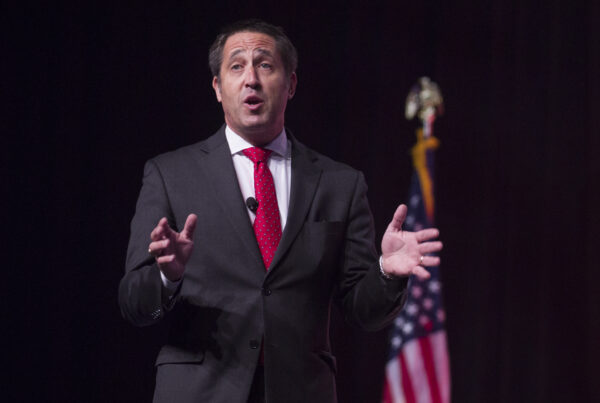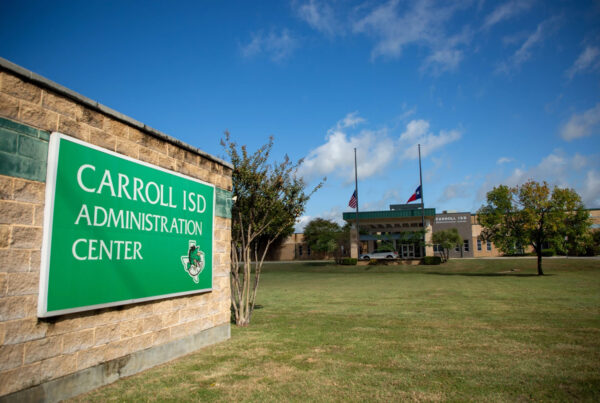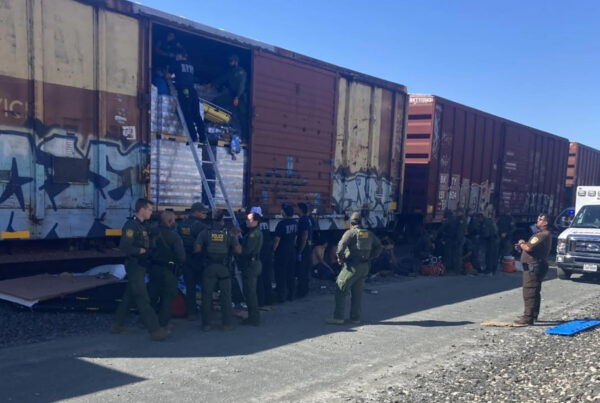From the American Homefront Project:
Alexis Gillis is the 24-year-old mother of a 9-month-old daughter. Her husband is a boatswain’s mate in the Navy.
“We actually met in high school. He was one year ahead of me, and he sat next to me in my algebra class,” she said.
They’re from Pennsylvania, but he’s stationed hundreds of miles away in Norfolk, which is one of the places in the Navy with long waiting lists for child care.
While she finishes her undergraduate degree, Gillis came up with a solution that will allow her to keep working.
“We just decided it would be best if I can either try to find a job where I can take her, or if I can figure out something to do from home,” she said, holding her daughter. “With me not having a bachelor’s degree, that’s really difficult.”
Gillis decided to become a nanny for another military couple. She can earn a second income for their family, and she can take her own daughter to work.
“It’s difficult because with being a military family you’re constantly moving,” Gillis said. “You never really get the chance to settle down for a while and get to really know somebody, especially a child care provider.”
The Navy provides child care on base in most places. Families can also apply to receive a subsidy to be used at civilian child care centers care off-base which qualify for the program.
The Navy says the waiting list for care has more than 5,500 names, which is a major drop from roughly 9,000 during the pandemic in 2020. The Navy is building new child care centers in high demand areas like Norfolk and San Diego and converting unused space for daycare at facilities around the country. The Navy has also raised the monthly subsidy to $1,700 a month for families to find childcare in their communities.
But the number of families who need care may actually be much longer than the list suggests, because some parents just stop applying.
“So people are just quicker to give up,” said Kayla Corbitt, who runs the advocacy group Operation Child Care. “They know they’re not going to access it. So why log in and reaffirm my need for care with I’m not going to get it?”
Corbitt’s group helps military parents find child care in Norfolk. She says most younger military couples can’t make ends meet without two incomes.
“There needs to be some kind of support for them in what they do,” she said. “And that begins at the very base level, which is this access to affordable childcare.”
Even when it builds the new centers, the Navy is having a tough time finding enough staff to run at full capacity. The bases are raising wages and offering bonuses and perks like discounts on child care for staff at the centers.
Civilian providers who want to qualify for military subsidies sometimes wait over a year for parents to be approved. In the meantime, parents are on the hook for the full cost.
To qualify, the centers also have to become federally licensed. Most providers are licensed by their state. They don’t have an incentive to go through the extra paperwork. The Navy has a pilot program in 10 states to accept state accreditation in some cases, but Corbitt says it would be easier to just give parents extra money to find childcare on their own.
“It sounds so simple, but when we think about how many contracts are out there to just administer these subsidies,” she said. “You do have to wonder how much would be saved if it just became an entitlement.”
The lack of reliable, low cost child care can be a factor when sailors with young families decide whether they can afford to stay in the military, said military spouse Heather Campbell.
“They get in, and they deal with some of these difficulties or they start building families and they say, ‘You know what, This actually isn’t a good fit. I’m going to choose my family over military service.’”
The wife of an Air Force officer with three children, Campbell is about to relocate from Alaska to the Hampton Roads area of Virginia. She’s also become an advocate for military families suffering from food insecurity. Her husband is a major and her kids are in school, which takes some of the pressure off. But she remembers what it was like when their family was younger, and her husband was first assigned to Alaska.
“I couldn’t take a job, which therefore meant we didn’t have a second income, which therefore meant our budget was extremely tight,” she said. “It’s all sort of like a domino effect.”
This story was produced by the American Homefront Project, a public media collaboration that reports on American military life and veterans.


